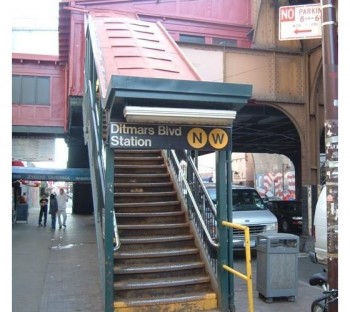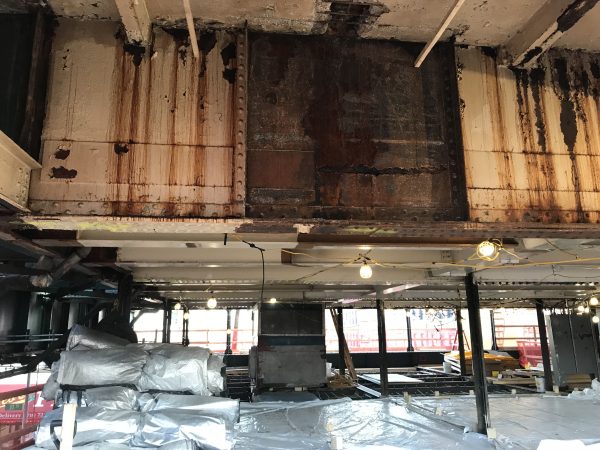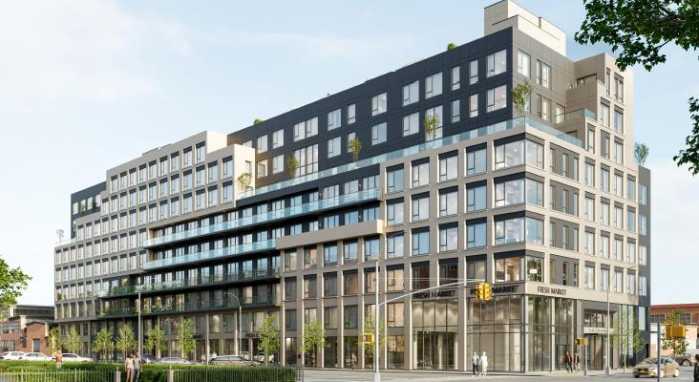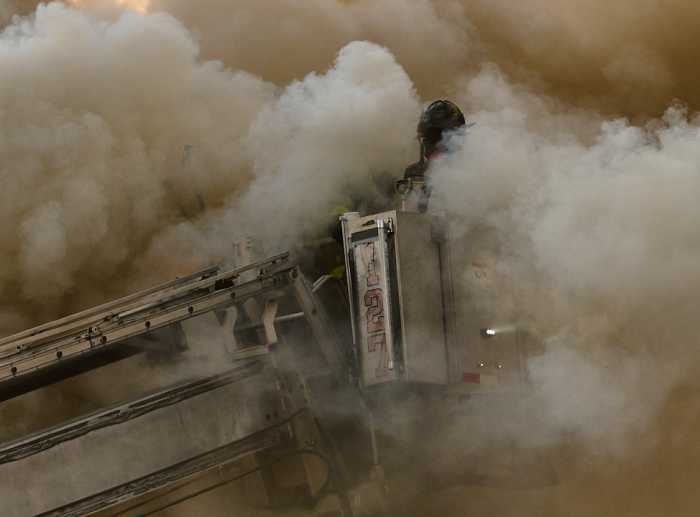
Astoria’s Elected Officials Hold Rally to Criticize MTA Over its Plans to Repair Ditmars Boulevard Station
Feb. 8, 2018 By Tara Law
Queens lawmakers and the MTA are at odds over the agency’s $22 million plan to overhaul the Ditmars Boulevard subway station in Astoria.
The MTA plans to spend 14 months fixing the station and argues that the project is necessary to restore the crumbling platforms and stairs, which are hazardous for riders. The station will not be closed while it does the work, which is expected to begin in April.
The elected officials, who were only made aware of the plans Monday, argue that they were blindsided by the MTA’s plans and argue that the community should have been given a say on what is needed and its implementation.
Councilmember Costa Constantinides, Assemblymember Aravella Simotas and State Senator Michael Gianaris held a rally Thursday afternoon at the station to chastise the MTA for the plans.
They complain that the MTA failed to solicit community feedback, and that the plans do not include elevators to make the station handicap accessible, and will not improve service. Given these issues, they question whether the inconvenience is worth it.
 Their frustration comes in the wake of the closures of the 30th and 36th Avenue stations (set to reopen in June), and the impending closures of the 39th Avenue and Broadway stations.
Their frustration comes in the wake of the closures of the 30th and 36th Avenue stations (set to reopen in June), and the impending closures of the 39th Avenue and Broadway stations.
The officials have criticized the MTA for not adding elevators to these four stations and said that the work has been disruptive for commuters and businesses.
The Ditmars Boulevard overhaul, which is set to begin in April, will not lead to a complete closure of the station like the other renovations. However, the project will require 100 feet of staging, some of which will block off parking spaces on 31st Street.
The MTA counters that the stations, which have not been renovated since 1917, are crumbling and are potentially dangerous for commuters.
The MTA released details of what is planned for the Ditmars Station. The plans include replacing the wooden stairs, which the MTA says are hazardous.
A new roof will be installed to prevent water from dripping through and freezing on the platforms, and decaying structural columns, beams and girders will be repaired and replaced.
The platforms, which the MTA says are low and uneven, will also be replaced.
“We are replacing steel, we are replacing concrete. We are replacing platforms. We are replacing all the things that keep this standing up,” said Jon Weinstein, Director of Communications and Senior Advisor to the Chair of the MTA.
The elected officials conceded at the rally that the stations needed work. However, they expressed concern that the MTA had not consulted with them or the public prior to announcing the project on Monday.
They claim that they would have told the MTA to prioritize improvements such as elevators to improve accessibility. They say that the MTA should focus on that as opposed to public art, WiFi and benches, which they say are also part of the renovations.
Constantinides described the MTA’s rollout as “tone deaf.”
“Our seniors who cannot climb stairs cannot access these new upgrades. Our disabled community members cannot access these upgrades,” Constantinides said. “Our families with strollers, who are here today in this cold with their children, are here to say they want to be able to get to the train.”
Gianaris said that the MTA is too focused on the aesthetics of the station.
“The MTA is squandering what money it doesn’t have to make the experience more attractive, so while we’re waiting for trains that never come, we can look around and see nice art,” he said.
Simotas noted that she has received numerous complaints from small business owners who claim the current station repairs are hurting their bottom line.
“They have a fraction of the foot traffic they used to have,” Simotas said of the businesses. “The MTA really has to understand how much these projects disrupt the community— business owners, residents— and all for what? For stations that aren’t accessible?”

Structural Conditions at 36th Ave. station, similar to Ditmars Blvd.


































